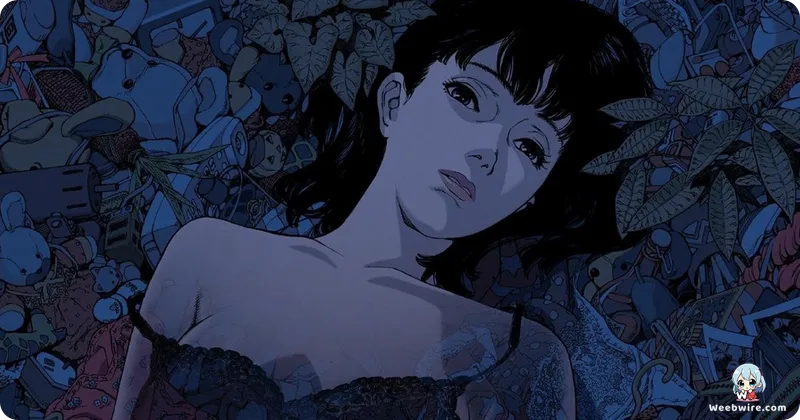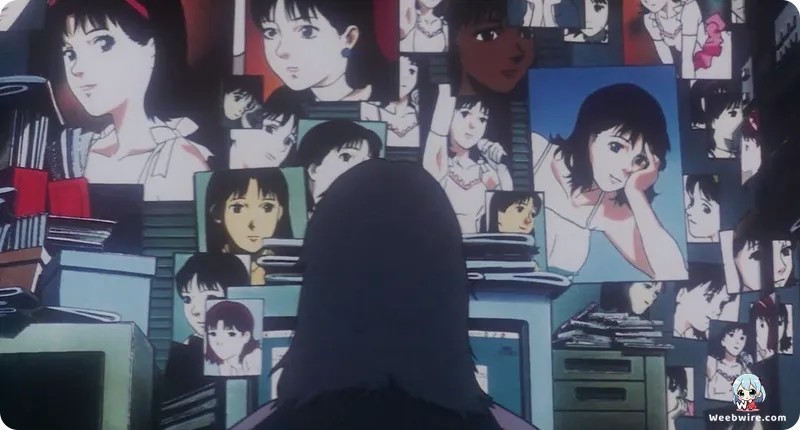Satoshi Kon's Perfect Blue: Unmasking the Enduring Legacy of a Psychological Masterpiece

Released in 1998, Satoshi Kon's directorial debut, Perfect Blue, stands as an enduring cinematic landmark. It is a chilling journey into psychological horror that continues to grip and unnerve audiences decades after its initial release. Far more than a mere animated thriller, the film offers a profound and unsettling examination of identity, the blurred lines of reality, and the suffocating grip of fame, masterfully layered with subtle brilliance and intricate details that often escape a casual viewing.
A Masterful Reimagining of Source Material
A cornerstone of Perfect Blue's creative triumph lies in its radical reimagining of its source material. While drawing inspiration from Yoshikazu Takeuchi's novel, Perfect Blue: Complete Metamorphosis, Kon boldly diverged, fundamentally transforming the narrative, thematic core, and even the conclusion. Takeuchi's original work presented a more conventional slasher story centered on a stalker. In Kon's visionary hands, it evolved into a sophisticated psychological descent, plunging deep into the fractured psyche of protagonist Mima Kirigoe. This audacious reinterpretation serves as a testament to Kon's unparalleled artistic foresight, showcasing his remarkable ability to elevate genre conventions into high art and firmly establish his distinctive directorial voice from his inaugural feature.
Enduring Influence on Global Cinema
The film's profound influence on global cinema is another captivating facet. Acclaimed director Darren Aronofsky, for instance, famously acquired the remake rights to Perfect Blue specifically to meticulously recreate a particular shot for his 2000 film, Requiem for a Dream, involving a character submerged in a bathtub. Beyond this direct homage, the striking thematic parallels between Perfect Blue and Aronofsky's 2010 Oscar-winning Black Swan are undeniable. Both narratives feature a female performer navigating a crumbling sense of reality, escalating paranoia, and mental deterioration in their relentless pursuit of perfection. The visual and narrative echoes are so pronounced that Black Swan is frequently cited by critics and fans as a spiritual successor or even an uncredited homage, underscoring Perfect Blue's lasting imprint on international filmmaking.
Overcoming Production Hurdles
The production journey of Perfect Blue itself was fraught with significant challenges. Initially envisioned as a direct-to-video Original Video Animation (OVA) project, the film faced severe financial hurdles following the collapse of its initial distributor. This unforeseen setback inadvertently paved the way for a theatrical release, granting the film a far broader platform and contributing significantly to its eventual cult status. This pivotal shift from a more modest video release to a full cinematic run highlights the project's inherent resilience and the sheer compelling force of Kon's artistic vision, which propelled it forward despite formidable obstacles.
Chillingly Prescient Themes
Kon's exploration of the Japanese idol industry within the film proves chillingly prescient, anticipating numerous real-world incidents and critical discussions regarding the intense pressures faced by young performers. Mima's harrowing struggle to transition from pop idol to actress, coupled with the relentless scrutiny and obsessive fan culture, provides a disturbingly accurate portrayal of celebrity's darker underbelly. Kon masterfully utilized the nascent internet as a chilling instrument of stalking and harassment, illustrating its potential for anonymity and obsession long before the widespread adoption of social media. The fictional 'Mima's Room' website, where a stalker meticulously chronicles Mima's life, serves as a terrifying precursor to the more extreme manifestations of modern online fan culture.
Artistry in Animation and Symbolism
The animation style employed by MADHOUSE, while not overtly flashy, is exceptionally potent in conveying the film's pervasive psychological tension. Character designs by Hisashi Eguchi lend a grounded, realistic aesthetic, rendering Mima's agonizing descent into madness all the more disturbing. The film frequently employs disorienting cuts, non-linear narrative progression, and seamless transitions between reality, dreams, and hallucinations, often blurring the distinctions so effectively that the audience, mirroring Mima's struggle, grapples to discern what is real. This pervasive narrative ambiguity is a signature element of Kon's oeuvre and a crucial factor in the film's enduring psychological impact.

Furthermore, the symbolism intricately woven throughout Perfect Blue is rich and multi-layered. The recurring motif of reflections, mirrors, and glass surfaces powerfully underscores Mima's fragmented identity and the various personas she is compelled to inhabit. The serene fish tank in her apartment gradually transforms into a poignant symbol of her entrapment and the overwhelming pressures she endures. Even the film's color palette subtly shifts, progressively darkening and becoming more muted as Mima's mental state deteriorates, artfully guiding the audience through her harrowing psychological spiral.
A Timeless Cinematic Legacy
Though Perfect Blue did not achieve immediate blockbuster success, its profound critical acclaim and burgeoning word-of-mouth rapidly solidified its standing as a groundbreaking work in animated cinema. It continues to be a subject of study in film academies and a point of reference for filmmakers globally, a testament to its timeless themes and pioneering narrative techniques. For any viewer seeking a deep dive into the realms of psychological horror, the complex intricacies of identity, or simply a masterclass in cinematic storytelling, Perfect Blue offers an unforgettable and profoundly unsettling experience that continues to unveil new depths with every subsequent viewing.
Credits
Perfect Blue
Author
Yoshikazu Takeuchi
Cover Art
Satoshi Kon
Studio
MADHOUSE
Publisher
Kadokawa Shoten
Producers





